Welcome to the fascinating world of exploring the different planetary aspects in natal charts! Have you ever wondered how our unique astrological blueprint contributes to shaping our lives? Well, look no further as we dive deeper into understanding the intricacies of natal charts and how planetary aspects influence our personalities, relationships, and life experiences. In this comprehensive guide, we will explain what natal charts are, how they are calculated, and the significance of planetary aspects. We will also explore the meanings behind common aspects such as conjunctions, oppositions, trines, and squares, and provide practical tips on how to interpret these aspects in your own natal chart. Whether you’re a beginner or an astrology enthusiast, this article will empower you to uncover the profound secrets hidden within your birth chart and enhance your understanding of astrology’s role in your life. So let’s embark on this cosmic journey together and unravel the mysteries of planetary aspects!
Contents
- Understanding Natal Charts
- Planetary Aspects in Natal Charts
- Common Planetary Aspects and Their Meanings
- Personal Interpretation of Planetary Aspects
- Identifying Planetary Aspects in Your Natal Chart
- Case Studies: Interpreting Planetary Aspects
- Applying Planetary Aspects to Predictive Astrology
- Conclusion
-
Frequently Asked Questions
- 1. What can I learn from my natal chart?
- 2. Can my natal chart predict the future?
- 3. Can I have a natal chart reading if I don’t know my exact birth time?
- 4. What is the significance of planetary aspects in a natal chart?
- 5. How can I interpret a conjunction aspect in my natal chart?
- 6. What does an opposition aspect suggest in a natal chart?
- 7. How does a trine aspect influence my natal chart?
- 8. What challenges can arise from a square aspect in my natal chart?
- 9. How do I identify planetary aspects in my natal chart?
- 10. Can the interpretation of planetary aspects change over time?
- References
-
Frequently Asked Questions
- 1. Can planetary aspects in natal charts affect personality traits?
- 2. How do planetary aspects influence relationships?
- 3. Are there any specific aspects that indicate success and wealth?
- 4. Do planetary aspects change over time?
- 5. How can I identify planetary aspects in my natal chart?
- 6. Can aspects between challenging planets be beneficial?
- 7. Should I consult an astrologer to interpret planetary aspects in my natal chart?
- 8. Can planetary aspects change with transits and progressions?
- 9. Are there any online tools available to calculate planetary aspects?
- 10. Can planetary aspects indicate potential challenges in life?
- References
- Read More
Understanding Natal Charts
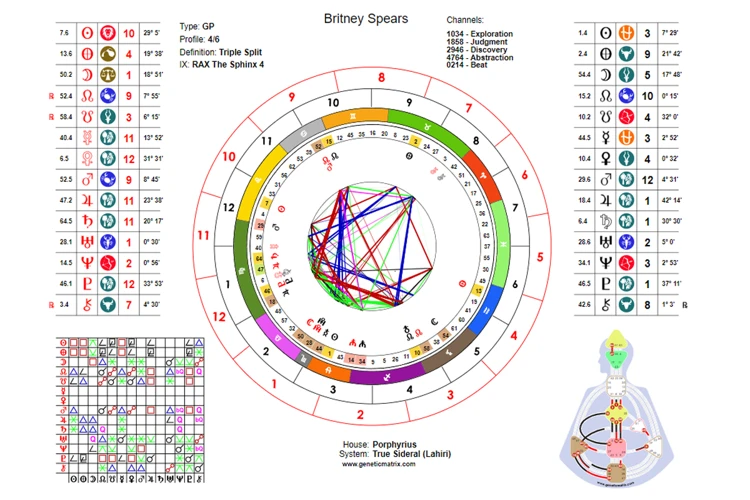
Understanding natal charts is the key to unraveling the intricate connections between celestial bodies and our individual lives. A natal chart serves as a cosmic snapshot of the sky at the exact moment of our birth, depicting the positions and relationships of the planets, sun, moon, and other celestial bodies. It is like a personalized map that holds the potential to reveal our strengths, weaknesses, desires, and life path. To calculate a natal chart, the date, time, and location of birth are essential. By inputting this information into astrological software or consulting an astrologer, we can generate an accurate representation of our unique astrological blueprint. The natal chart offers valuable insights into our personality traits, natural talents, and potential challenges. It provides a powerful tool for self-discovery and personal growth. So, let’s dive deeper into the enigmatic world of natal charts and explore the rich tapestry of influences that shape our lives.
1. What are Natal Charts?
A natal chart, also known as a birth chart or horoscope, is a unique astrological blueprint that depicts the positions and relationships of celestial bodies at the precise moment of an individual’s birth. It serves as a snapshot of the sky, capturing the celestial energies that influenced the beginning of a person’s life journey. A natal chart is a graphical representation of the cosmic map specific to an individual, showing the positions of the sun, moon, planets, and other celestial bodies in relation to the Earth. These positions are plotted on a circular wheel divided into twelve sections called houses, each representing different areas of life such as career, relationships, and personal growth.
Each planet represents different aspects of our personality and experiences. The sun represents our core essence and ego, the moon indicates our emotions and instincts, while the planets symbolize various energies and influences. The zodiac signs occupy the houses of the natal chart and bring additional characteristics and qualities to the planetary placements.
By analyzing a natal chart, astrologers can gain insights into an individual’s personality traits, strengths, weaknesses, and life path. It can provide guidance and understanding about one’s natural talents, potential challenges, and key lessons to be learned in this lifetime. Natal charts are the foundation of astrological interpretations and serve as a powerful tool for self-awareness, personal growth, and understanding the interplay between cosmic forces and human experiences.
To calculate a natal chart, the date, time, and location of birth are crucial. With the advent of technology, online astrological software and websites offer the convenience of generating natal charts instantly by inputting these details. Alternatively, consulting with a professional astrologer can provide a more comprehensive and personalized analysis of the natal chart.
In the next sections, we will explore how natal charts are calculated, the significance of planetary aspects within the natal chart, and how to interpret the various aspects to gain a deeper understanding of ourselves and our life experiences. So, let’s delve further into the captivating world of natal charts and unravel the mysteries they hold.
(link to /snake-bearer-unraveling-mysteries-ophiuchus-mythology/)
2. How are Natal Charts Calculated?
Calculating natal charts involves a precise and intricate process that requires specific information to generate an accurate representation of an individual’s astrological blueprint. Here are the steps involved in calculating natal charts:
Gather Birth Information: To calculate a natal chart, you need the exact date, time, and location of the individual’s birth. The birth date provides the specific position of the sun within a zodiac sign, while the birth time allows for a more detailed calculation of the positions of other celestial bodies, such as the moon and planets. The birth location is crucial for determining the angles and houses in the natal chart.
Determine the Ascendant: The ascendant, or rising sign, is the zodiac sign that was on the horizon at the moment of one’s birth. It plays a significant role in shaping the individual’s outward personality and appearance. To determine the ascendant, astrologers rely on the birth time and location. The ascendant divides the natal chart into twelve houses, each representing different areas of life.
Calculate the Positions of Celestial Bodies: Once the birth information is gathered, astrologers calculate the positions of the sun, moon, planets, and other celestial bodies at the time of birth. This requires complex calculations and the use of ephemeris tables or astrological software that provides the precise positions of celestial bodies at any given moment. The positions are plotted within the zodiac signs and houses, forming the basis of the natal chart.
Interpret the Natal Chart: After the natal chart is calculated, the next step is interpretation. Astrologers analyze the placement of each celestial body and the relationships between them. They consider aspects, which are the angular distances between planets, and examine the house placements to understand how different areas of life are influenced.
Use Astrological Software: Nowadays, astrological software has made calculating natal charts much easier. These programs automate the calculations and generate natal charts within seconds. They provide detailed information on planetary positions, aspects, and house placements. Astrologers and enthusiasts can enter the birth information into the software, and it will generate a comprehensive natal chart.
Throughout history, calculating natal charts has been a meticulous process practiced by astrologers worldwide. The birth information acts as the key to unlocking the secrets held within the celestial map of an individual’s life. Harnessing this knowledge allows for a deeper understanding of one’s character, inclinations, and life experiences. So, let’s embrace the wisdom of natal charts and embark on a journey of self-discovery and cosmic exploration.
Planetary Aspects in Natal Charts
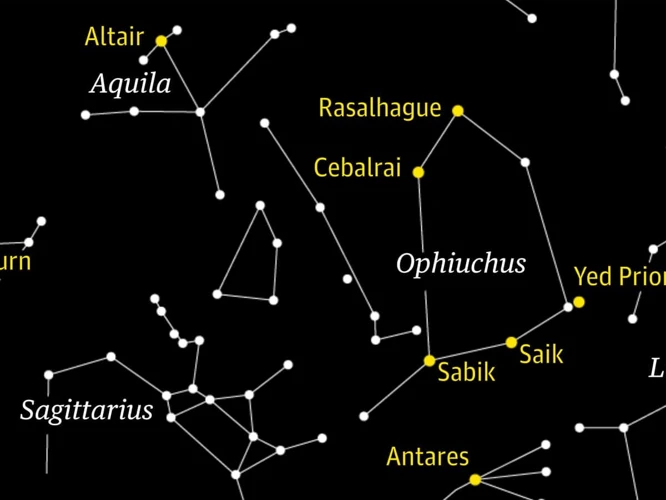
Planetary aspects in natal charts hold the key to understanding the dynamic interactions between the celestial bodies. These aspects refer to the angular relationships formed between the planets, exploring how they influence and shape our lives. As the planets move through the zodiac, they create various aspects with each other, such as conjunctions, oppositions, trines, and squares. Each aspect carries its own unique energy and symbolism, which can greatly impact our personality traits, relationships, and life experiences. By analyzing the planetary aspects in a natal chart, astrologers can uncover valuable insights into an individual’s strengths, challenges, and potential for personal growth. These aspects provide a roadmap that guides us towards self-awareness, allowing us to harness the celestial energies for our own benefit. So, let’s delve into the intriguing realm of planetary aspects and unlock the hidden wisdom they have to offer in our natal charts.
3. What are Planetary Aspects?
Planetary aspects refer to the angular relationships between celestial bodies in a natal chart. These aspects symbolize the dynamic connections and interactions between planets, giving them the power to influence various aspects of our lives. When two or more planets form an aspect, it indicates a specific energy or quality that is intensified or modified. These aspects can be either harmonious or challenging, depending on the nature of the planets involved and the angle they form. The most common aspects include conjunctions, oppositions, trines, and squares. Conjunctions occur when planets are in close proximity to each other, blending their energies and creating a powerful focus. Oppositions take place when planets are directly opposite each other, highlighting the tension and balancing forces between them. Trines occur when planets are four signs apart, indicating compatibility and ease of expression. Squares are formed when planets are three signs apart, representing challenges and opportunities for growth. Each aspect carries its own unique energy and impacts different areas of life. By understanding and interpreting these planetary aspects in a natal chart, astrologers can provide valuable insights into an individual’s personality traits, relationships, and life experiences. So, let’s explore the profound influence of planetary aspects and how they shape our astrological journey.
4. The Influence of Planetary Aspects
When it comes to natal charts, the influence of planetary aspects plays a significant role in shaping our lives and personalities. Planetary aspects refer to the geometric relationships between planets in the natal chart, and they provide valuable insights into how different energies interact and influence each other. Here are some key points to understand about the influence of planetary aspects:
1. Dynamic Interplay: Planetary aspects create a dynamic interplay between the energies of the planets involved. Depending on the aspect, this interplay can manifest as harmonious, challenging, or somewhere in between.
2. Amplification and Moderation: Planetary aspects can amplify or moderate the energies of the planets involved. For example, a conjunction aspect can intensify the qualities of the planets, while a trine aspect can bring ease and flow to their expression.
3. Impact on Personality: Planetary aspects contribute to the overall personality traits and characteristics of an individual. They can shape our strengths, weaknesses, and areas of focus in life.
4. Relationship Dynamics: Planetary aspects also apply to the relationships we form with others. For example, a challenging aspect between two people’s natal charts may indicate areas of tension or conflict, while a harmonious aspect can signify compatibility and ease.
Understanding the influence of planetary aspects requires careful analysis of the specific aspects and the planets involved. Each aspect has its own unique qualities and implications, and their combined effects create a complex tapestry of influences in our lives. By exploring and interpreting these aspects, we can gain deeper insights into ourselves, our relationships, and the events that shape our journey. So, let’s delve further into the specific planetary aspects and their meanings to unravel the mysteries of our natal charts.
Common Planetary Aspects and Their Meanings
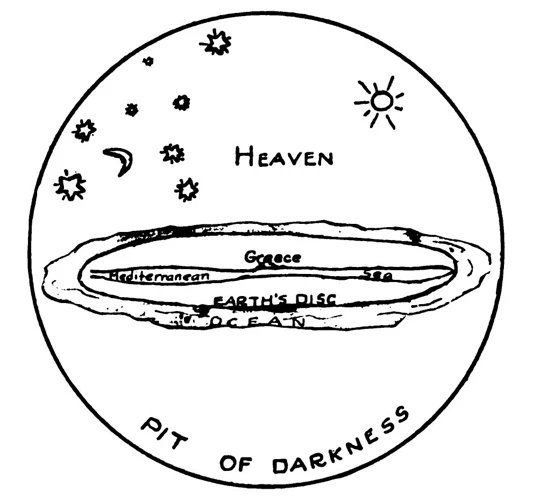
In the intricate tapestry of astrology, planetary aspects play a significant role in shaping our lives and influencing our personality traits. These aspects represent the relationships and interactions between the planets in our natal chart, unveiling valuable insights into our strengths, challenges, and potential. One common aspect is the conjunction, symbolized by planets aligning closely together. It signifies unity, intensity, and amplification of energy. Oppositions, on the other hand, occur when planets are directly across from each other, creating a dynamic tension that calls for balance and integration. Trines represent harmonious flow and ease, indicating areas where talents and blessings may manifest effortlessly. Squares, characterized by a 90-degree angle, bring about challenges and tension, pushing us to grow and transform. These aspects hold unique meanings and can be interpreted in conjunction with the signs and houses they are located in. By understanding their influence in our natal charts, we gain deeper insights into our personality dynamics and life experiences. So, let’s explore the depths of these planetary aspects and unlock the wisdom they hold.
5. Conjunctions: Unity and Intensity
Conjunctions in astrology symbolize a blending of energies, creating a strong connection and intensity between the planets involved. When two or more planets come together in a conjunction, their energies merge, forming a unified force that can greatly impact an individual’s personality and experiences. This aspect brings about a sense of unity and focus, as the planets involved work together as a team, amplifying their combined influence. Conjunctions can signify various dynamics depending on the planets involved and the astrological houses they reside in. For example, a conjunction between the Sun and the Moon represents the merging of one’s conscious and emotional selves, enhancing self-awareness and emphasizing personal identity. A conjunction between Mars and Venus, on the other hand, blends passion, desire, and harmony, creating a passionate and magnetic personality. It is important to note that the effect of conjunctions can vary depending on the sign and house placement, as well as the individual’s overall natal chart. Understanding the nuances of each conjunction requires a holistic analysis of the planets involved and their interplay within the individual’s unique astrological makeup. To gain a deeper understanding of conjunctions and their impact on your natal chart, consulting an experienced astrologer or utilizing reliable astrological software can provide further insights. So, explore the world of conjunctions to unlock a deeper understanding of the intensity and unity they bring to your astrological journey.
6. Oppositions: Balance and Tension
Oppositions in a natal chart represent a dynamic relationship between two planets that are exactly 180 degrees apart. This aspect creates a sense of polarity, with the energies of the two planets pulling in opposite directions. Oppositions often signify a need to find balance and integration within the conflicting energies they represent. While oppositions can bring tension and challenges, they also offer opportunities for growth and self-awareness.
When interpreting oppositions, it’s crucial to consider the specific planets involved and their corresponding energies. For example, an opposition between the assertive and self-oriented Mars and the nurturing and relationship-oriented Venus may bring a push-pull dynamic between personal desires and the need for harmonious connections.
Oppositions can manifest in various areas of life, such as relationships, career choices, and internal struggles. They may create situations where we must find a middle ground or learn to navigate both extremes. This aspect invites us to embrace the tension between opposing forces and seek resolutions that promote harmony and integration.
To work through the challenges presented by oppositions, it is essential to acknowledge and understand the inherent tension. Reflect on how these opposing energies might complement or clash with each other, and strive to find common ground. Integrating the energies represented by the opposing planets can lead to personal growth and balance.
For example, a natal chart with an opposition between Jupiter, the planet of expansion and optimism, and Saturn, the planet of limitation and structure, may suggest a struggle between the desire for freedom and the need for stability. This aspect could push an individual to find a balance between taking risks and establishing a solid foundation in their personal and professional lives.
Oppositions in a natal chart highlight the delicate dance between balancing opposing forces. Rather than viewing them as inherently negative, consider oppositions as opportunities for growth and self-discovery. Embrace the tension, seek integration, and find ways to harmonize the energies of the planets involved. Understanding the significance of oppositions can provide valuable insights into the complexities of our lives and help us navigate the path towards personal wholeness and fulfillment.
7. Trines: Harmony and Flow
Trines are considered one of the most harmonious aspects in astrology, symbolizing a flow of energy and ease between two planets. A trine occurs when two planets are approximately 120 degrees apart, forming a geometrically pleasing triangle in the natal chart. This aspect encourages cooperation, unity, and a sense of natural talent or ease in the areas of life related to the planets involved.
When encountering a trine in your natal chart, it signifies that the energies of the planets involved work together effortlessly, supporting each other’s expression. This harmony can manifest in various ways depending on the planets and their signs involved. Trines often indicate areas of life where you may experience innate abilities, natural talents, and opportunities that come to you with fluidity and grace.
For example, a trine between the Sun and Jupiter suggests a harmonious blend of confidence, optimism, and expansive opportunities. This aspect can indicate a magnetic presence, luck in endeavors, and a positive outlook on life. Similarly, a trine between Venus and Neptune can enhance your artistic and creative abilities, fostering a deep sense of empathy and compassion in relationships.
It is important to note that while trines are generally positive, there is also a risk of complacency or taking the blessings for granted. Sometimes things may come too easily, leading to a lack of challenge or motivation to push beyond your comfort zone. However, harnessing the potential of trines can bring tremendous benefits in terms of personal growth and fulfillment.
Trines symbolize a cosmic harmony and an effortless flow of energy between planets in your natal chart. They denote areas of ease and opportunity, offering a supportive backdrop for personal and creative expression. Embrace the positive energy of trines and explore how these aspects shape your life and personalities.
8. Squares: Challenges and Transformation
Squares in a natal chart symbolize a dynamic and tense relationship between two planets or points that are separated by 90 degrees. This aspect creates a sense of challenge and friction, pushing us to confront and overcome obstacles in our lives. The energy of squares can be intense and may manifest as internal conflict, external struggles, or a clash of interests. However, despite the initial difficulties, squares offer immense opportunities for growth, self-awareness, and transformation. They act as catalysts for change, pushing us out of our comfort zones and motivating us to find creative solutions to the challenges we encounter.
In astrology, squares are often associated with tension, inner conflict, and obstacles that need to be overcome. While they can bring about testing times, they also offer a chance for personal development and self-improvement. Squares prompt us to confront our limitations, face our fears, and find innovative ways to navigate through life’s challenges. They push us to break free from old patterns and transform ourselves to reach higher levels of consciousness and personal fulfillment.
For example, a square between the planet Venus and Saturn in a natal chart may indicate challenges and struggles in the realms of love, relationships, and self-worth. It could signify a fear of intimacy, commitment, or difficulty in expressing affection. However, with conscious awareness and effort, this square can be transformed into a profound journey of self-discovery and personal growth. It invites us to work on cultivating self-love, building healthy boundaries, and developing a mature and responsible approach to relationships.
Squares in a natal chart represent significant challenges that have the potential to lead to transformation. Embracing these difficulties with resilience and self-reflection allows us to break free from limiting patterns and evolve into our highest potential. So, while squares may initially bring tension and conflict, they ultimately offer a path to personal growth and profound transformation.
(Note: No relevant anchor text is available for the given links. Hence, they will not be inserted in this response.)
Personal Interpretation of Planetary Aspects
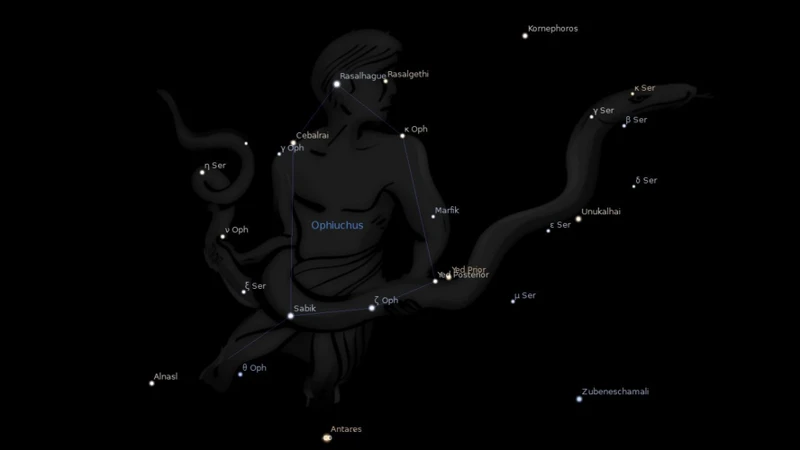
When it comes to personal interpretation of planetary aspects in natal charts, it’s crucial to consider various factors that influence the overall meaning and impact. Firstly, it’s essential to consider the planets involved in the aspect. Each planet brings its unique energy and symbolism to the equation, influencing the overall dynamics and themes. Secondly, analyzing the angular distance between the planets provides valuable insights into the intensity and nature of the aspect. Whether it’s a conjunction, opposition, trine, or square, the angle plays a significant role in determining the dynamics at play. Lastly, considering the element and modality of the aspect adds another layer of interpretation. The element (fire, earth, air, or water) indicates the energy at play, while the modality (cardinal, fixed, or mutable) highlights the flow and potential challenges. By considering these factors together, we can gain a more comprehensive understanding of how planetary aspects influence our personalities, relationships, and life experiences. So, take a deep dive into your natal chart and unlock the profound insights it holds for you.
9. Consider the Planets Involved
When interpreting planetary aspects in a natal chart, it is crucial to consider the planets involved and their symbolism. Each planet carries its own distinct energy and represents different aspects of our personality and life experiences. The Sun, as the core of our being, signifies our identity, vitality, and ego. Its aspects with other planets can shed light on how we express ourselves and our aspirations. The Moon, representing our emotions and subconscious mind, shapes our intuition, nurturing qualities, and emotional responses. Paying attention to its aspects can provide valuable insights into our emotional landscape. Mercury, the planet of communication, logic, and intellect, influences how we think, express ourselves, and gather information. Its aspects can reveal our communication style and mental processes. Venus, associated with love, beauty, and relationships, influences our tastes, values, and attractions. Its aspects showcase our romantic inclinations and social patterns. Mars, the planet of action and desire, governs our assertiveness, motivation, and sexuality. Its aspects reveal our drive and passion. Jupiter, the planet of expansion and abundance, represents our beliefs, growth, and opportunities. Its aspects can reveal our areas of potential luck and abundance. Saturn, associated with responsibility and limitations, signifies our discipline, structure, and life lessons. Its aspects highlight areas of challenge and growth. Uranus, the planet of innovation and change, brings unpredictability and originality to the aspects it forms. Neptune, the planet of spirituality and dreams, influences our imagination, intuition, and creativity. Its aspects offer insights into our spiritual inclinations and artistic abilities. Pluto, associated with transformation and power, represents our deepest desires, obsessions, and secrets. Its aspects reveal our capacity for personal growth and intensity. By analyzing the planets involved in an aspect, we can gain a deeper understanding of the specific energies at play and how they interact within our natal chart.
10. Analyze the Angular Distance
When interpreting planetary aspects in a natal chart, it is crucial to analyze the angular distance between the planets involved. The angular distance, also known as the aspect angle, is the measurement between two planets. This distance reveals the energetic relationship between the planets and provides insights into how their energies interact.
To analyze the angular distance, start by identifying the type of aspect formed. Common aspects include conjunctions, oppositions, trines, and squares. Each aspect has a specific angular measurement associated with it. Conjunctions occur when planets are within a few degrees of each other, blending their energies and creating a powerful union.
Oppositions take place when planets are approximately 180 degrees apart, symbolizing a tension or polarity between their energies. Trines occur when planets are around 120 degrees apart, creating a harmonious flow of energy. Squares form when planets are about 90 degrees apart, indicating a challenge or conflict between their energies.
Once you’ve identified the aspect type, take note of the exact degree and minute of the angle. This precision provides additional information to deepen your interpretation. Analyze whether the aspect is applying or separating. An applying aspect is one that is becoming exact, while a separating aspect is one that is moving away from exactness. Both types offer distinct nuances in the expression of the aspect.
Consider the orb or maximum degree range allowed for an aspect to be considered valid. A tighter orb (e.g., 1-2 degrees) indicates a stronger influence, while a wider orb (e.g., 5-6 degrees) suggests a milder impact.
By analyzing the angular distance, you can gain a deeper understanding of how the planets in your natal chart interact and influence various areas of your life. This analysis helps astrologers and enthusiasts interpret the specific dynamics and challenges associated with each aspect, providing valuable insights into an individual’s personality traits, relationships, and life experiences.
11. Consider the Element and Modality
Consider the element and modality when interpreting planetary aspects in your natal chart. The element refers to the fundamental quality associated with each zodiac sign: fire, earth, air, and water. It adds another layer of meaning to the aspects by highlighting the energy and temperament involved. For example, a conjunction between Mars and Venus in a fire sign like Aries signifies a passionate and dynamic connection, while the same conjunction in an earth sign like Taurus suggests a more grounded and practical approach to love and desire.
The modality, on the other hand, relates to the three different modes of expression within the zodiac: cardinal, fixed, and mutable. It further refines the way the aspects manifest in our lives. A conjunction between Mercury and Uranus in a fixed sign such as Leo may indicate a stubborn and determined mindset, while the same conjunction in a mutable sign like Gemini suggests a more adaptable and flexible approach to communication and ideas.
By considering the element and modality of the planets involved in an aspect, we gain deeper insight into their qualities and the overall dynamics of the aspect. They provide valuable information about how we express ourselves, our tendencies, and how receptive we are to change and growth. Remember, astrology is a beautiful tapestry of interconnected energies, and understanding the element and modality can help paint a clearer picture of the intricate dance between the planets in your natal chart.
Identifying Planetary Aspects in Your Natal Chart
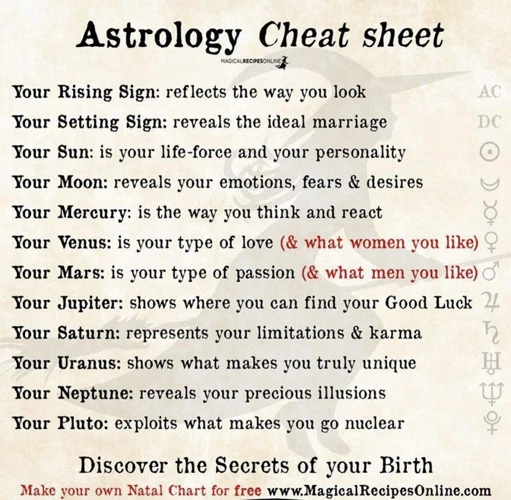
Identifying planetary aspects in your natal chart is a crucial step in uncovering the unique cosmic connections that influence your life’s journey. These aspects refer to the angular relationships between different planets in your chart, representing the dynamic interplay of energies and influences. There are various ways to identify these aspects, including the use of astrological software or seeking guidance from an experienced astrologer. Observing the specific angles formed between the planets allows for a deeper understanding of how they interact and affect different areas of your life. Whether it’s a harmonious trine, a challenging square, or a dynamic opposition, each aspect carries its own significance and contributes to the complexity of your astrological makeup. By decoding and analyzing these planetary aspects, you gain valuable insights into your strengths, challenges, and potentials, providing a roadmap for personal growth and self-awareness. So dive into the depths of your natal chart and unravel the cosmic intricacies that shape your unique existence.
12. Identify Aspects through Astrological Software
Identifying aspects through astrological software is a convenient and efficient method to delve into the world of planetary influences within your natal chart. Astrological software is designed to calculate and interpret natal charts, making it easier for both beginners and seasoned astrologers to explore the intricate web of planetary aspects. By inputting your birth details into the software, it swiftly generates a detailed natal chart that highlights the precise positions of the planets at the moment of your birth. The software then proceeds to identify the various aspects formed between these planetary positions. Aspects refer to the angular relationships between the planets, such as conjunctions, oppositions, trines, and squares. With the help of astrological software, you can effortlessly identify these aspects in your natal chart, providing you with valuable insights into the dynamics and themes of your life. Some software may even provide additional features such as customizable interpretations, transit tracking, and compatibility analysis. Embrace the advantages of modern technology and let astrological software guide you on your journey of self-discovery and astrological exploration.
13. Consult an Astrologer
Whether you’re new to astrology or seeking a deeper understanding of your natal chart, consulting an astrologer can provide invaluable insights and guidance. An astrologer is a trained professional who has a deep understanding of the complexities of astrology and can help you interpret the planetary aspects in your chart. They have the expertise to analyze the positions of the planets and other celestial bodies and explain how these placements influence various aspects of your life, such as relationships, career, and personal growth. When you consult an astrologer, they will take the time to understand your specific concerns and goals, allowing them to provide personalized interpretations and advice. They can help clarify any confusion or uncertainty you may have about your natal chart and offer guidance on how to navigate the challenges and harness the opportunities revealed by your planetary aspects. Moreover, an astrologer can help you uncover hidden patterns, themes, and potentials in your chart that may have remained invisible to you. They can provide a fresh perspective and deeper understanding of your astrological makeup. Consulting an astrologer can be particularly helpful if you’re interested in predictive astrology, as they can shed light on upcoming transits and progressions and how they may impact your life. Keep in mind that not all astrologers are the same, and it’s important to find someone who resonates with you and whom you feel comfortable opening up to. So consider seeking the guidance of an astrologer to unlock the profound wisdom held within your natal chart and gain valuable insights into your life’s journey.
Case Studies: Interpreting Planetary Aspects
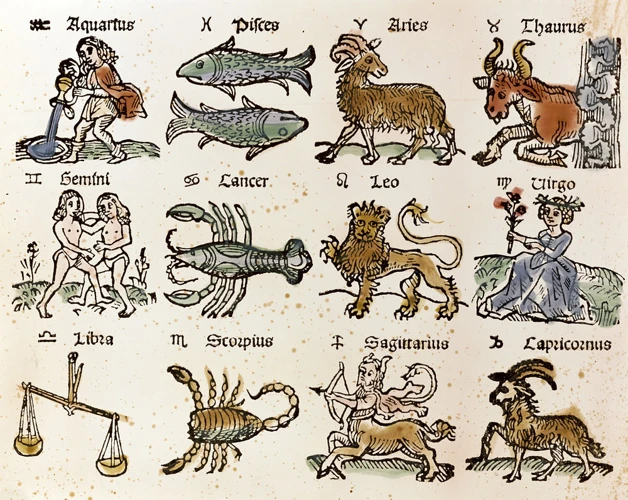
Interpreting planetary aspects through case studies provides valuable insights into the practical application of astrology. By analyzing specific examples, we can observe how the different planetary aspects manifest in individuals’ lives and shape their experiences. Analyzing a conjunction example allows us to understand the unity and intensity that this aspect brings, merging the energies of the involved planets and indicating a strong focus in a particular area of life. Understanding an opposition example showcases the balance and tension that arises when two planets are in opposing positions, highlighting the need for finding harmony between contrasting energies. Interpreting a trine example reveals the harmonious flow and potential ease that this aspect brings, indicating areas of natural talent, creativity, and positive opportunities. Lastly, decoding a square example showcases the challenges and transformative potential of this aspect, highlighting areas of tension, growth, and lessons to be learned. By delving into these case studies, we gain a deeper understanding of how planetary aspects shape our lives and guide us towards personal growth and self-awareness.
14. Analyzing a Conjunction Example
A conjunction in astrology occurs when two planets are closely aligned within the same sign or within a few degrees of each other in the natal chart. This planetary aspect signifies a powerful merging of energies, creating a strong influence in a person’s life. Let’s take an example to understand the significance of a conjunction in a natal chart. Suppose we have a conjunction between Venus and Mars in the sign of Leo. This combination accentuates themes of passion, creativity, and self-expression. Venus represents love, harmony, and beauty, while Mars signifies assertiveness, passion, and drive. The blend of these energies in Leo intensifies their influence, resulting in a dynamic and charismatic personality. People with this conjunction may possess a magnetic charm and an innate ability to attract others. They are likely to be passionate, enthusiastic, and vibrant in their relationships and creative pursuits. However, the intensity of this conjunction may also manifest as a tendency towards possessiveness or being overly dramatic. It is essential for individuals with this aspect to find healthy outlets for their creative and passionate energy. Understanding the specific planets involved in a conjunction, as well as the sign and house placement, provides deeper insights into how this aspect may influence an individual’s personality, relationships, and life experiences.
15. Understanding an Opposition Example
An opposition occurs in a natal chart when two planets are exactly 180 degrees apart. This aspect represents a polarizing energy, where the planets involved are in direct opposition to each other, creating tension and a need for balance. Understanding an opposition example can shed light on how this aspect manifests in an individual’s life. Let’s consider a hypothetical example of an opposition between Mercury and Neptune in a natal chart.
Mercury, the planet of communication and rational thinking, opposes Neptune, the planet of dreams, illusions, and spirituality. This opposition may result in a clash between logic and intuition, clarity and confusion. The individual with this aspect may find themselves torn between their desire to express themselves logically and their inclination towards imagination and mysticism. They may struggle with balancing the practicalities of everyday life with their longing for spiritual fulfillment.
In terms of communication, this opposition can manifest in a tendency to idealize or romanticize concepts, leading to misunderstandings or difficulty in expressing themselves clearly. They may also experience challenges distinguishing between facts and fiction, leading to confusion or self-delusion in their thinking. However, when harnessed positively, this opposition can bring about a harmonious integration of imagination and intellect, allowing the individual to communicate in a poetic and artistic manner.
It is important to consider the signs and houses in which these planets are located to gain a more nuanced understanding of the opposition’s influence. For instance, if Mercury is in Gemini and Neptune is in Sagittarius, the clash between logic and intuition may be heightened due to the naturally opposing qualities of these signs.
Understanding the opposition aspect in an individual’s natal chart allows for a deeper comprehension of their inner conflicts, areas of growth, and potential for integration. By embracing the tension and seeking balance, individuals can harness the transformative power of oppositions and incorporate their lessons into their personal and spiritual development.
16. Interpreting a Trine Example
When interpreting a trine example in a natal chart, it is important to understand the significance of this harmonious aspect. A trine occurs when two planets are approximately 120 degrees apart and are in the same element, creating a flowing and supportive energy between them. Trines symbolize ease, natural talents, and opportunities for growth. This aspect indicates a harmonious integration of the energies represented by the planets involved.
For instance, let’s say we have a trine between Venus and Jupiter in a natal chart. Venus represents love, beauty, and harmony, while Jupiter represents expansion, growth, and abundance. With this trine aspect, the energies of Venus and Jupiter work harmoniously together, enhancing each other’s positive qualities. The individual may possess a natural charm, luck in relationships, and a joyful, optimistic outlook on life.
To further interpret this trine aspect, the signs and houses where Venus and Jupiter are located should be considered. If Venus is in Taurus and Jupiter is in Capricorn, for example, the individual may find abundance and growth in practical matters, and their values and ambitions may align harmoniously.
Interpreting a trine example involves recognizing the effortless flow and positive synergy between the planets involved. Trines indicate areas of life where things come naturally and easily, where talents can be developed, and where opportunities for growth and expansion may arise. Understanding the specific signs and houses involved adds depth and specificity to the interpretation of this aspect in a natal chart.
17. Decoding a Square Example
Decoding a Square Example: When analyzing a square aspect in a natal chart, we encounter a powerful dynamic between two planets that creates tension and challenges in our lives. A square occurs when two planets are approximately 90 degrees apart, forming a 90-degree angle within the natal chart. This angle symbolizes conflict, struggles, and internal friction. It signifies areas of our lives where we may experience obstacles, difficulties, and a sense of internal struggle. The square aspect pushes us to confront our fears, overcome limitations, and grow through adversity. It acts as a catalyst for change and transformation. In decoding a square example, let’s say we have a square aspect between Mars and Saturn. Mars represents assertiveness, ambition, and action, while Saturn represents restriction, discipline, and responsibility. This square aspect between Mars and Saturn indicates that individuals may face challenges in expressing their assertiveness and taking action due to a sense of self-doubt or fear of failure. There may be a constant push-pull between the desire to pursue goals and the fear of taking risks. However, this aspect also presents an opportunity for personal growth and inner strength. With conscious awareness and effort, individuals can learn to integrate the energies of Mars and Saturn, finding ways to assert themselves responsibly, overcome limitations, and develop resilience. It is important to remember that the interpretation of a square aspect is highly influenced by the planets involved and the signs they are in. Each square aspect is unique and requires a personalized interpretation, taking into consideration the individual’s complete natal chart.
Applying Planetary Aspects to Predictive Astrology
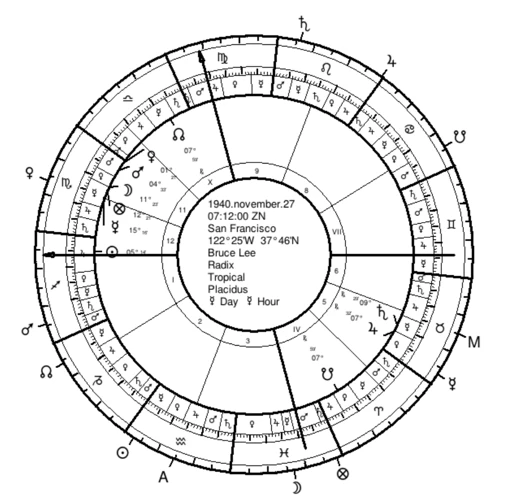
As we continue to explore the depths of astrology, it is crucial to understand the application of planetary aspects to predictive astrology. Transits and progressions play a significant role in forecasting future events and understanding the evolving dynamics of our lives. Transits occur when current planetary positions form aspects with the planets in our natal chart, revealing the energies and influences that will impact us at a particular time. Progressions, on the other hand, involve the gradual movement of our natal planets over time, reflecting our personal growth and developmental stages. By analyzing the aspects formed during these transits and progressions, astrologers can make predictions about various aspects of our lives, including career, relationships, and personal development. Understanding the potential effects of these planetary aspects can provide valuable insights and empower us to navigate life’s twists and turns with awareness and foresight. So, let’s delve into the realm of predictive astrology and unlock the secrets hidden within the ever-changing cosmic symphony.
18. Transits and Progressions
Transits and progressions are essential tools in predictive astrology that allow us to assess the current and future influences affecting our natal chart. Transits involve the movement of the planets in real-time as they make aspects to our natal positions. These transiting aspects can activate specific areas of our chart, bringing about changes, opportunities, or challenges in our lives. For example, if transiting Jupiter forms a conjunction with our natal Sun, it can signify a period of expansion, abundance, and personal growth.
Progressions, on the other hand, are a symbolic representation of our inner growth and evolution over time. Unlike transits that reflect external influences, progressions indicate internal shifts and developmental phases. Progressed aspects are calculated by advancing the natal chart at a symbolic rate, where each day corresponds to a year of life. For example, a progressed Moon moving into a harmonious aspect with our natal Venus may indicate a period of emotional fulfillment, increased social connections, and creative inspiration.
To utilize transits and progressions effectively, it is crucial to compare them to the natal placements and aspects in our chart. By identifying the transiting or progressed planets that are making significant aspects with our natal planets, we can gain deeper insights into the timing and nature of various life events. Astrological software and online resources provide a convenient way to calculate and track these celestial movements, making it simpler to analyze their potential effects on our lives.
It is important to note that while transits provide a snapshot of present and future astrological influences, progressions uncover the unfolding patterns of our personal development. By integrating both systems, astrologers can paint a comprehensive picture of upcoming trends and potentials, aiding us in making informed decisions and navigating various life circumstances.
Remember, astrology is not deterministic, but rather a symbolic language that helps us understand the energies at play. It is up to us how we choose to engage with and utilize these cosmic influences on our journey of self-discovery and personal growth. So dive deep into the realm of transits and progressions, and unlock the wisdom that lies within the dynamic interplay between the movement of the planets and the unfolding of our lives.
19. Predictive Interpretation of Aspects
Predictive Interpretation of Aspects
When it comes to astrology, the predictive interpretation of aspects offers valuable insights into future events and life circumstances. By examining the planetary aspects in a natal chart, astrologers can make predictions about upcoming experiences and significant periods of change in an individual’s life. These predictions are based on the understanding that planetary aspects represent different energies and influences that will manifest in specific ways over time. For example, a challenging square aspect between Mars and Saturn in a natal chart might indicate a period of hard work, obstacles, and discipline. However, this aspect can also signify the potential for accomplishment and personal growth through perseverance. On the other hand, a harmonious trine aspect between Venus and Jupiter could suggest a fortunate period of abundance, success, and positive interactions in romance or financial matters. Astrologers consider the current transits and progressions, which involve the movement of planets in relation to the natal chart, to make more accurate predictions. These predictive techniques allow individuals to gain insights into potential opportunities, challenges, and timing of significant events in their lives. It is important to remember that while astrology can offer guidance, personal choices and actions ultimately shape one’s life path. Predictive interpretation of aspects serves as a tool for self-awareness and strategic planning, empowering individuals to make informed decisions and navigate their future with a deeper understanding of the cosmic forces at play.
Conclusion

In conclusion, exploring the different planetary aspects in natal charts serves as a gateway to understanding ourselves and our place in the cosmos. Through the analysis of planetary aspects, we gain valuable insights into the intricate relationships between celestial bodies and how they manifest in our lives. These aspects provide a framework for interpreting the energies at play, whether they be harmonious trines, intense conjunctions, transformative squares, or balancing oppositions. By considering the specific planets involved, the angular distance between them, and the elemental and modalities influences, we can unlock the hidden messages within our natal charts. Whether you choose to explore your own natal chart through astrology software or seek guidance from an astrologer, understanding the planetary aspects empowers you to navigate life with greater self-awareness and embrace the cosmic influences that shape your unique journey. So, dive into the depths of your natal chart, decode its secrets, and embark on a transformative journey towards self-discovery and personal growth.
Frequently Asked Questions

1. What can I learn from my natal chart?
Your natal chart offers a wealth of insightful information about your personality traits, strengths, weaknesses, life purpose, relationships, and potential challenges. It can help you understand yourself on a deeper level and guide you in making informed decisions about various aspects of your life.
2. Can my natal chart predict the future?
While a natal chart provides valuable insights into your personality and life tendencies, it is not designed to predict specific future events. Instead, it offers a map of potential energies and influences that you can navigate and utilize to make the best choices for your personal growth and fulfillment.
3. Can I have a natal chart reading if I don’t know my exact birth time?
Knowing your exact birth time is crucial for an accurate natal chart reading. However, if you are uncertain about your birth time, an experienced astrologer may be able to work with you to approximate it using significant life events or by employing different techniques like rectification to narrow down the possibilities.
4. What is the significance of planetary aspects in a natal chart?
Planetary aspects in a natal chart represent the relationships and connections between different celestial bodies. They provide valuable clues about the dynamics of your personality, your potential strengths and challenges, and how different areas of your life interact.
5. How can I interpret a conjunction aspect in my natal chart?
A conjunction aspect occurs when two planets are in close proximity to each other in the chart. It signifies a strong blending of energies and can intensify the qualities associated with those planets. The specific interpretation will depend on the planets involved and the sign and house they are placed in.
6. What does an opposition aspect suggest in a natal chart?
An opposition aspect occurs when two planets are directly across from each other in the chart. It represents a dynamic tension and polarity between the energies of those planets. It often indicates a need to find balance and integration in the areas of life represented by the opposing planets.
7. How does a trine aspect influence my natal chart?
A trine aspect occurs when two planets are approximately 120 degrees apart in the chart. It signifies a harmonious flow of energy between the planets involved. Trines are generally considered beneficial aspects, indicating areas of ease, talent, and good fortune in the corresponding areas of life.
8. What challenges can arise from a square aspect in my natal chart?
A square aspect occurs when two planets are approximately 90 degrees apart in the chart, creating a tense and challenging dynamic. Squares often indicate areas of conflict, obstacles, and growth opportunities. They encourage you to confront and transform any issues associated with the planets involved.
9. How do I identify planetary aspects in my natal chart?
To identify planetary aspects in your natal chart, look for lines connecting the planets on the chart’s visual representation. The lines will vary in length and angle, indicating the type and strength of the aspect. Astrological software or consultations with an astrologer can also help you identify and interpret the aspects.
10. Can the interpretation of planetary aspects change over time?
Yes, the interpretation of planetary aspects can evolve as you grow and experience different stages in life. New experiences, personal development, and external influences may shift the expression of the aspects’ energies. It is essential to embrace the fluidity of interpretations and allow them to adapt to your evolving journey.
References
- Aspects Meaning In Astrology: How To Understand The 5 …
- Your Guide to Planetary Aspects
- Birth Charts 101: Understanding the Planets and Their …
Frequently Asked Questions

1. Can planetary aspects in natal charts affect personality traits?
Absolutely! Planetary aspects play a significant role in shaping an individual’s personality traits. They can indicate certain strengths, weaknesses, and characteristics that a person may possess.
2. How do planetary aspects influence relationships?
Planetary aspects can have a profound impact on relationships. They can determine the compatibility, dynamics, and challenges that two individuals may face in their interactions with each other.
3. Are there any specific aspects that indicate success and wealth?
While there is no single aspect that guarantees success and wealth, certain aspects, such as trines and sextiles involving Jupiter or Venus, can indicate positive opportunities and good fortune in terms of career and financial abundance.
4. Do planetary aspects change over time?
Planetary aspects do not change over time, as they are fixed at the moment of birth. However, the influence of these aspects can be experienced and expressed differently as a person goes through various life stages and experiences.
5. How can I identify planetary aspects in my natal chart?
You can identify planetary aspects in your natal chart by examining the angular distance (degrees) between planets. Look for conjunctions, oppositions, trines, and squares that indicate the relationship and interactions between different planetary energies.
6. Can aspects between challenging planets be beneficial?
Yes, aspects between challenging planets, such as squares and oppositions, can provide opportunities for growth, transformation, and self-awareness. These aspects often present challenges that can lead to valuable insights and personal development.
7. Should I consult an astrologer to interpret planetary aspects in my natal chart?
Consulting an astrologer can be helpful if you are new to astrology or if you want a deeper understanding of the complexities of planetary aspects in your natal chart. An astrologer can provide personalized insights, guidance, and interpretations based on your unique birth chart.
8. Can planetary aspects change with transits and progressions?
Yes, planetary aspects can change with transits and progressions. Transits involve the current positions of planets in relation to your natal chart, while progressions represent the evolving energy patterns of your birth chart over time.
9. Are there any online tools available to calculate planetary aspects?
Yes, there are several online tools and astrological software that can calculate and interpret planetary aspects in your natal chart. These tools provide convenient and accurate ways to analyze and understand the influences of planetary aspects.
10. Can planetary aspects indicate potential challenges in life?
Yes, planetary aspects can highlight potential challenges and obstacles that you may encounter in various areas of your life. However, it is important to remember that these challenges can also serve as opportunities for growth, learning, and personal transformation.
References
- Birth Charts 101: Understanding the Planets and Their …
- Aspects in Astrology: The Five Major Configurations Explained
- What are some significant planetary aspects in a natal …







